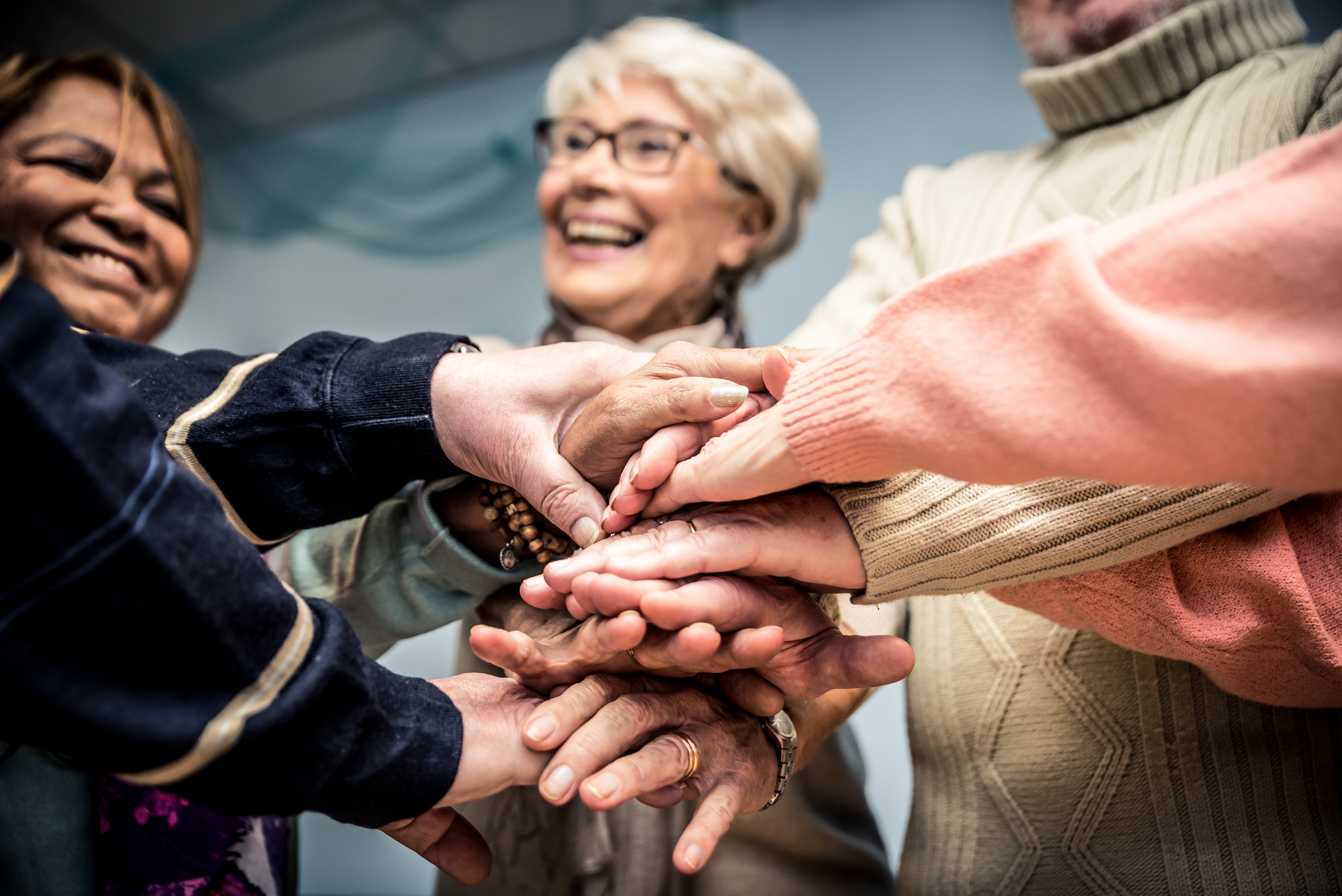Asset Publisher
Taking a Teamwork Approach to Caregiving
06/11/2019

Older adults and loved ones joining hands– we're all in this together!
As we age, most of us would prefer to stay within our own homes, but this becomes difficult as age and infirmities slow us down. Adding to this, grown children or other relatives may not live nearby. If we are caring for an older loved one who is living at home, they may also struggle to maintain their independence if they do not have all the support they need to manage their day-to-day life. The best way we can help a loved one in this situation is to plan ahead and assemble a team.
Even if our loved ones are still relatively healthy, there may be situations in which they need help. No one person should be expected to do it alone – family members and friends can all come together and contribute. Here are some steps we can take to gather together a caregiving team:
1. Choose a leader
Like any team, ours needs a captain, or leader. Out of town family members may not be able to do the hands-on tasks, but can help us with the coordination of the care team. The first step for the captain is to make a list. They should write down all the tasks that need to be done--now and in the future--and place them into categories.
2. Utilize strengths
Next, we can build the rest of the team by incorporating the strengths and skills of the people around us. If someone in the group has experience with financial and legal matters, they could help with wills, bank accounts and bill paying. One person may want to be responsible for scheduling doctors’ appointments, managing medications and other medical needs.
3. Support a loved one in everyday tasks
There may be a need to monitor a loved one’s activities of daily living. If a loved one is healthy, this may just involve making sure that someone stops by their home weekly to check on their safety. Household chores become more of a burden as we age, so we may want to consider asking a grandchild or younger relative to come by monthly to wash the floors, mow the lawn or be on hand to move a heavy piece of furniture. We should have a list of tasks ready so when someone does offer help, we’ll know which tasks have yet to be completed.
4. Plan for difficult discussions
We should also include one or two particular people whom a loved one trusts to ask for help with addressing sensitive topics that may arise. We may want to consider a close friend or clergy member that a loved one respects, as this person may be able to talk to them more successfully about difficult subjects such as their driving ability or about accepting a home health aide.
5. Enlist help with transportation
We may have to look outside of our core team for transportation. If a loved one belongs to a church, we can check to see if the church community has a list of volunteers to drive people to doctor appointments or help with errands. Many local towns or even rural counties, have transit systems for older adults and adults with disabilities. We can do some research and include this information into our plans.
Our team might not be able to come together to meet in person, but it’s still important that we communicate and all share information. We should set a reminder to send out a monthly e-mail or newsletter to ask everyone to respond with their care report.
Do not feel guilty that you cannot handle everything. Using a team approach to caregiving will make everyone happier and ultimately provide better care for a loved one.
Resource: Caregiver Action Network
A version of this article appeared in Private Health News.
Related Assets
Suggested Reads
WeCare...Because You Do℠
Benjamin Rose's WeCare is a telephone- and email-based care coaching program that assists and supports older adults with chronic conditions and caregivers.
How to Hold Family Meetings to Discuss an Older Loved One’s Care
Family meetings can be a valuable tool. Each person can express their thoughts and concerns at the same time. Everyone will hear the same message and come together to support their parent and each other. This will help to reduce misinformation, and make it eas...
Using Team Meetings to Develop a Dementia Care Strategy for a Loved One
An individual with dementia or Alzheimer’s disease often requires a village of caregivers to help take care of their needs during different stages of the disease. Whether they be family caregivers or providers, caregivers must always be vigilant to make sure t...
